|
Page < 1 2 3 4 5 6 7 8 9 10 11 >
Effect of Muslim Atrocities on Hindu Society
The Islamic onslaught destroyed centers of learning
in North India. A historical fact worth noting that the last great school of
Indian mathematics flourished in far away Kerala in the 14-15th century, where Madhava
and his students worked on problems of Calculus and Infinite Series more than
two centuries before Newton and Gregory. India before the coming of Islam had
many great centers of learning. Taxila, Nalanda, Vikramashila, Sarnath and many
more used to attract students from all over the world. Following the
establishment of the Delhi Sultanate, for the next six hundred years, not a
center of learning worth the name was established.
Effect
of Muslim Atrocities on Indian Society can be summed up in the words of Abu-Raihan
Muhammad Ibn Ahmad Alberuni, Muslim scholar
from Central Asia. He wrote a very comprehensive book "Indica" in1030
AD. "Alberuni felt a strong inclination towards Indian philosophy. He
learnt Sanskrit and Hindu literature and sciences. He seems to have thought that
the philosophers both in ancient India and Greece, held in reality the very same
ideas, the same as seem to have been his own i.e. of pure monotheism. He seems
to have to have reveled in the pure theories of Bhagavad-Gita. He accompanied Mahmud of Ghazni
on
his campaigns in India wrote: "Mahmud utterly ruined the prosperity of the
country, and performed there, wonderful exploits, by which the Hindus became
like atoms of dust scattered in all directions. ... Their scattered remains
cherish, of course, the most inveterate aversion of all the Muslims. This
is the reason, too, why Hindu sciences have retired far away from those parts of
the country conquered by us, and have fled to places, which our hand cannot yet
reach."
(Refer to Edward
Sachau -- translator Alebruni's 'Indica and
article 'Earth's rotation, its globular shape
and gravity' - By Vinod Kumar,
June 1999 http://www.americanfriends.org/kashmir/earth-shape_K62.html
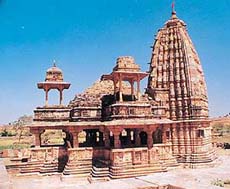 The Moghuls neglected practical
and secular learning, especially the sciences. Throughout
their long rule, no institutions was established comparable to modern
university, although early India had world-famous centers of learning such as
Taxila, Nalanda and Kanchi. Neither the
nobles nor the mullas were stirred into learning. Nor did Akbar show any
curiosity in European science and philosophy, although both Hindus and Muslims
had made notable scientific contributions in the past. Akbar was
presented with printed books and a printing press, yet even the Indian classics
were first printed by Europeans. It is therefore, not surprising that during the
period of European struggle for power, India was in a state of unparalleled
decline. The Moghuls neglected practical
and secular learning, especially the sciences. Throughout
their long rule, no institutions was established comparable to modern
university, although early India had world-famous centers of learning such as
Taxila, Nalanda and Kanchi. Neither the
nobles nor the mullas were stirred into learning. Nor did Akbar show any
curiosity in European science and philosophy, although both Hindus and Muslims
had made notable scientific contributions in the past. Akbar was
presented with printed books and a printing press, yet even the Indian classics
were first printed by Europeans. It is therefore, not surprising that during the
period of European struggle for power, India was in a state of unparalleled
decline.
(source: India
and World Civilization - By
D. P. Singhal p. 198).
Akbar
was illiterate. So were most of the Muslim rulers. They did not build one good
college in eight centuries, complains Nehru. Naturally, the Muslim invaders saw
no good in the two great universities of India—Taxila and Nalanda. They
destroyed them. Peter
Mansfield - historian of the Middle East, writes: “The great
movements of ideas in western Europe from the Reformation through the
Renaissance and counter-Reformation left the Ottoman world almost untouched.”
The French and Russian revolutions were not different. They made little impact
on the thinking of the Muslim world.
(source: Knowledge
is suspected in Islam
- By M.S.N. Menon). Refer
to Heroic
Hindu Resistance to Muslim Invaders (636 AD to 1206 AD) - By Sita Ram Goel.
Voice of India, New Delhi.
Naipaul
flays Islam
Novelist V S Naipaul
has caused an outcry by comparing the "calamitous
effect" of Islam on the world with colonialism.
Speaking
after a reading of his new book, Half a Life, at the Queen Elizabeth Hall
in London, Sir Vidia said Islam had enslaved and attempted to wipe out other
cultures. "It has had a calamitous effect on converted peoples. To be
converted you have to destroy your past, destroy your
history. You have to stamp on it, you have to say 'my ancestral culture does not
exist, it doesn't matter'."
(source:
Guardian
News Service) .http://www.hindustantimes.com/nonfram/051001/detFOR05.asp
Dhan Gopal
Mukerji (18901936) was
the first South Asian immigrant to the United States and author
of Caste and Outcast, sees the Muslim period
of Indian history as horribly oppressive to the Hindus, during which the Hindus
had to abandon some of their highly evolved traditions:
"The Mohammedans wanted to
convert all India to Mohammedanism . . . the Hindus were not willing converts
but resisted to the point of death . . . When the Hindu men died fighting, the
entire female population of garrison towns, in order not to fall into the hands
of their conquerors, burned themselves alive. It was this measure that saved
India from being overpopulated by Mohammedan children . . . . Girls before they
reached the age of maturity were irrevocably betrothed to young Hindus, so that
they could be protected from the Mohammedan enemies . . . Mohammedan rule saw in
India a new marriage system totally unlike the ancient sayamvara ,
meaning the choice."
(source: Caste and Outcast
- Review - Indiastar.com).
Refer to Heroic
Hindu Resistance to Muslim Invaders (636 AD to 1206 AD) - By Sita Ram Goel.
Voice of India, New Delhi.
Refer
to Muslim
contribution to civilisation
- By Dr
Farrukh Saleem - Twenty-two
per cent of humanity is Muslim, at least 1.4 billion followers of Islam. Omar
al-Khayyam has been dead for 833 years, and since then Muslims have contributed
next to nothing to physics, chemistry, medicine, literature or economics.
Top of Page
Islamic
Scholarship on India
The
Arabic, Turkish, and Persian invaders brought their historians to document their
conquests of India as great achievements. Many of these
historians ended up loving India and wrote excellent accounts of life in India,
including about the Gandhara and Sindh regions. Their
translations of Indian texts were later retranslated into European languages and
hence many of the European Renaissance inputs from Islam were actually Indian
contributions traveling via Islam.
Many
Muslim scholars showed great respect for Indian society. For
instance:
“The
Arabic literature identifies numerous ministers, revenue officers, accountants,
et cetera, in seventh- and eighth-century Sind as 'brahmans' and these were
generally confirmed in their posts by the conquerors. Where these brahmans came
from we do not know, but their presence was regarded as beneficial. Many cities
had been founded by them and Sind had become 'prosperous and populous' under
their guidance.”
“Of
caste divisions very little mention is made. The stereotype social division is
in professional classes rather than a ritualized caste-hierarchy: 'priests,
warriors, agriculturists, artisans, merchants'.”
“As
Sindh was under the actual rule of Khalif Mansur (AD 753 - 774), there came
embassies from that part of India to Baghdad, and among them scholars, who
brought along with them
two books, the
Brahamsiddhanta to Brahamgupta (Sirhind), and his Khandkhdyaka (Arkanda). With
the help of these pandits, Alfazari, perhaps also Yakub ibn Tarik, translated
them. Both works have been largely used, and have exercised a great influence.
It was on this occasion that the Arabs first became acquainted with a scientific
system of astronomy. They learned from Brahamgupta earlier than from
Ptolemy."
“Another
influx of Hindu learning took place under Harun, AD 786 - 808. The ministerial
family Barmak, then at the zenith of their power, had come with the ruling
dynasty from Balkh, where an ancestor of theirs had been an official in the
Buddhistic temple Naubehar, i.e. nava vihara = the new temple (or
monastery). The name Barmak is said to be of Indian descent, meaning paramaka
i.e. the superior (abbot of the vihara).”
“Induced
by family traditions, they sent scholars to India, there to study medicine and
pharmacology. Besides, they engaged Hindu scholars to come to Baghdad, made them
the chief physicians of their hospitals, and ordered them to translate from
Sanskrit into Arabic books on medicine, pharmacology, toxicology, philosophy,
astrology, and other subjects. Still in later centuries Muslim scholars
sometimes traveled for the same purposes as the emissaries of the Barmak, e.g.
Almuwakkuf not long before Alberuni's time…”
“Many
Arab authors took up the subjects communicated to them by the Hindus and worked
them out in original compositions, commentaries and extracts. A favorite subject
of theirs was Indian mathematics, the knowledge of which became far spread by
the publications of Alkindi and many others."
Alberuni
leaves no doubt as to the origin of the so-called Arabic system of numbers:
“The
numerical signs which we use are derived from the finest forms of the Hindu
signs… The Arabs, too, stop with the thousand, which is certainly the most
correct and the most natural thing to do... Those, however, who go beyond the
thousand in their numeral system are the Hindus, at least in their arithmetical
technical terms, which have been either freely invented or derived according to
certain etymologies, whilst in others both methods are blended together. They
extend the names of the orders of numbers until the 18th order for religious
reasons, the mathematicians being assisted by the grammarians with all kinds of
etymologies.”
In
Islamic Spain, European scholars acknowledged India very positively, as
evidenced by an important and rare 11th century book on world science
commissioned by the ruler of Spain. Its author, Said
al-Andalusi (1029
-1070) Islamic scholar, who
was a prolific author and in the powerful position of a judge for the king in
Muslim Spain.
He
focused
on India as a major center for science, mathematics and culture. Some excerpts:
“The
first nation (to have cultivated science) is India. This is a powerful nation
having a large population, and a rich kingdom. India is known for the wisdom of
its people. Over many centuries, all the kings of the past have recognized the
ability of the Indians in all the branches of knowledge.”
“The
Indians, as known to all nations for many centuries, are the metal (essence) of
wisdom, the source of fairness and objectivity. They are peoples of sublime
pensiveness, universal apologues, and useful and rare inventions.”
“To
their credit, the Indians have made great strides in the study of numbers and of
geometry. They have acquired immense information and reached the zenith in their
knowledge of the movements of the stars (astronomy) and the secrets of the skies
(astrology) as well as other mathematical studies. After all that, they have
surpassed all the other peoples in their knowledge of medical science and the
strengths of various drugs, the characteristics of compounds and the
peculiarities of substances [chemistry].”
“Their
kings are known for their good moral principles, their wise decisions, and their
perfect methods of exercising authority.”
“What
has reached us from the work of the Indians in music is the book… [that]
contains the fundamentals of modes and the basics in the construction of
melodies.”
“That
which has reached us from the discoveries of their clear thinking and the
marvels of their inventions is the (game) of chess. The Indians have, in the
construction of its cells, its double numbers, its symbols and secrets, reached
the forefront of knowledge. They have extracted its mysteries from supernatural
forces. While the game is being played and its pieces are being maneuvered,
there appear the beauty of structure and the greatness of harmony. It
demonstrates the manifestation of high intentions and noble deeds, as it
provides various forms of warnings from enemies and points out ruses as well as
ways to avoid dangers. And in this, there is considerable gain and useful
profit.”
Even as late as the 12th century C.E, al-Idrîsî
(1100-1166), a geographer and scholar from Spain and Sicily, included the
Gandhara region, including Kabul, with India.. The region was famous
for the export of its three local products: indigo, cotton, and iron.
(source:
How
'Gandhara' became 'Kandahar'
- By Rajiv Malhotra and The
Making of the Indo-Islamic World. Volume I – Early Medieval India and the
Expansion of Islam 7th-11th Centuries
- By Andre Wink. Oxford University Press, New Delhi 1999. p.112
-193).
Top of Page
Taj Mahal – A Rajput Palace/Hindu Temple ?
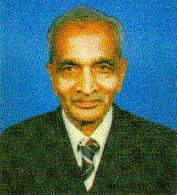 The story has been
challenged by Professor P.N. Oak (1917 -
2007) was the author of Taj
Mahal: The True Story, who believed that the whole world has been
duped by the history regarding this monument. The story has been
challenged by Professor P.N. Oak (1917 -
2007) was the author of Taj
Mahal: The True Story, who believed that the whole world has been
duped by the history regarding this monument.
Mr. Oak
graduated from
Agra
University
and completed his MA LLB from
Bombay
University
. He was one of the organizers of the Indian National Army, a director and
commentator at the Free India Radio,
Saigon
, and later a co-worker of Netaji Subhas Chandra Bose.
He later worked on the editorial staffs of the Hindustan Times and the
Statesman. He also worked as an editor in the American
Embassy’s Information Service in New Delhi.
He has
claimed that the Taj Mahal is not Queen Mumtaz Mahal's tomb, but an
ancient Hindu temple palace of Lord Shiva (then known as Tejo Mahalaya),
worshipped by the Rajputs of Agra city.
In the course of his research, Oak discovered that the Shiva temple palace had
been usurped by Shah Jahan from then Maharaja of Jaipur, Jai Singh. Shah Jahan
then remodelled the palace into his wife's memorial.
In
his own court chronicle, Badshahnama, Shah Jahan admits that an exceptionally
beautiful grand mansion in Agra was taken from Jai Singh for Mumtaz's burial.
The
ex-Maharaja of Jaipur is said to retain in his secret collection two orders from
Shah Jahan for the surrender of the Taj building.
The
use of captured temples and mansions as a burial place for dead courtiers and
royalty was a common practice among Muslim rulers. For example, Hamayun, Akbar,
Etmud-ud-Daula and Safdarjung are all buried in such mansions.
(source: The
Taj Mahal - BBC).
"Is
world history written from a Christian or Islamic perspective
alone credible?"
There
are no final answers to our questions about humanity's past. In
world history, all "conclusions" must be tentative. Yet,
accounts of the past construed by Western historians usually come
neatly packed in western cultural and sociological paradigms. But
the nagging question diligent seekers of truth about the past ask
remains, "Is world history written from a Christian or
Islamic perspective alone credible?" The fact is, world's distant past is
pre-Christian and pre-Islamic. Though it remains unknowable,
scattered evidence of an older world (that is periodically
reported in world media) tends to arouse the speculative impulse
of a historian like
India
's P.N. Oak who believed that our world's origins go back to its
Vedic heritage.
(source: P.N.Oak:
The lone fighter, etymologist, and historian
- By Prof. Shrinivas Tilak).
Many
believe that the Taj Mahal was a 12th century temple-palace seized from Raja
Jaisingh of Jaipur and converted to accommodate Mumtaz's tomb. Mullah
Abdul Hamid Lahori, Shah Jehan's own official chronicler, has written, that
Mumtaz's body was laid to rest in a "lofty sky-high palace with a majestic
dome" procured from Raja Jaisingh.
The journals of Tamerlane (1336-1405) and Babur (1483-1530)
show that this palace pre-dates Shah Jehan and also points to the notable
absence of any claim by Shah Jehan himself for its construction.
A passage from Shahjahan’s court chronicle, the Badshahnama,
which despairingly admits that the Taj Mahal is a commandeered Hindu palace.
Mansingh’s mansion (manzil) was then in the possession of his grandson
Jaisingh – says the Badshahnama.
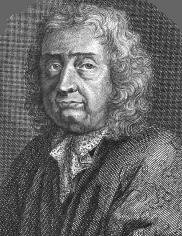 French
merchant
Jean Baptiste
Tavernier (1605 - 1689) who visited India during Shah Jahan’s
reign, has said in his book, Travels
in India, the cost of the scaffolding exceeded that of the
entire work done regarding the mausoleum. This proves that all Shah Jahan had to
do was engrave Koranic texts on the walls of a Hindu palace; that is why the
cost of the scaffolding was much more than the value of the entire work done. French
merchant
Jean Baptiste
Tavernier (1605 - 1689) who visited India during Shah Jahan’s
reign, has said in his book, Travels
in India, the cost of the scaffolding exceeded that of the
entire work done regarding the mausoleum. This proves that all Shah Jahan had to
do was engrave Koranic texts on the walls of a Hindu palace; that is why the
cost of the scaffolding was much more than the value of the entire work done.
The
Encyclopedia Brittanica
states, that the Taj Mahal building complex comprises stables and guest and
guard rooms.
Mr. Nurul Hassan Siddiqui’s
book, The City of Taj, admits that the
Badshahnama states that a Hindu palace was commandeered to bury Mumtaz in.
Historian Vincent Smith, also states that
Babur died in the Taj Mahal 100 years before the death of the lady for whom the
Taj is believed to have been built as a mausoleum. On
page 321, Smith in his book
Akbar
the Great Moghul,
says: " It is surprising to find unmistakable Hindu features in the
architecture of the tomb of a most zealous Musalman saint, but the whole
structure suggests Hindu feeling and nobody can mistake the Hindu origin
of the column and struts of the porch."
(source: Proof
of Vedic Culture's Global Existence -
By Stephen Knapp
p. 280-9). Refer
to Heroic
Hindu Resistance to Muslim Invaders (636 AD to 1206 AD) - By Sita Ram Goel.
Voice of India, New Delhi.
Taj Mahal - A Symbol of Love?
Lesser known
facts about Shah Jehan
Mumtaz
Was Shah jahan's 4th Wife Out Of 7
Shahjahan Killed Mumtaz's Husband To Marry Her
Mumtaz Died while delivering his 14th kid
He then Married Mumtaz's Sister
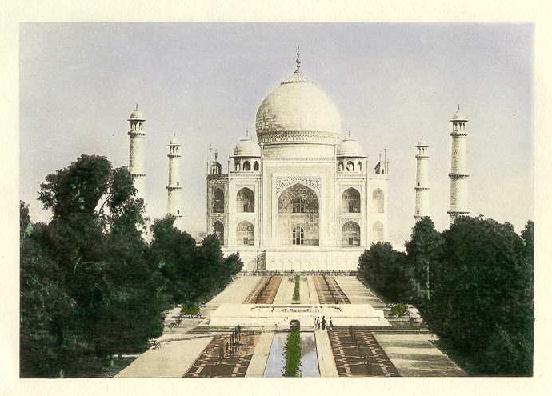
Sir V. S.
Naipaul had called the Taj Mahal a vulgar, crude building, a display of
power built on blood and bones. "The
Taj is so wasteful, so decadent and in the end so cruel that it is
painful to be there for very long. This is an extravagance that
speaks of the blood of the people."
As
one famous Telugu poet wrote, "It is not to remember who built the Taj
Mahal. It is to remember who are the labourers"
Refer to
Eminent Historian Displeased with The Ayodhya Verdict – By Dr. Koenraad Elst
and
Media Manipulation
- By Sandeep and
Ayodhya: Has India really moved on? – By Amitabh Tripathi
and
Verdict leaves ‘secular intellectuals’ aghast – By Swapan Dasgupta
and
Ram Ki Nagari, once again – By Kanchan Gupta
***
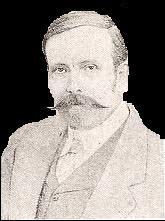 Dr.
Ernest
Binfield Havell (1861-1934
(principal to the
Madras College of Art in the 1890s and left as principal of the Calcutta College
of Art some 20 years later) has observed: " His
first point was that whatever the inspiration, ‘there
is one thing which has struck every writer about the Taj Mahal and that is its
dissimilarity
to any
other monument in any other part of the world.." Dr.
Ernest
Binfield Havell (1861-1934
(principal to the
Madras College of Art in the 1890s and left as principal of the Calcutta College
of Art some 20 years later) has observed: " His
first point was that whatever the inspiration, ‘there
is one thing which has struck every writer about the Taj Mahal and that is its
dissimilarity
to any
other monument in any other part of the world.."
Havell
insisted that the Islamic architecture in India was influenced by the Hindus.
He supplied the following quotes from the opening quotes of his book,
Indian
Architecture - Its Psychology, Structure and History from the First
Mohammedan Invasion to the Present Day. These
give evidence at the admiration the Muslims had for Indian architecture:
"
Alberuni, the Arab historian,
expressed his astonishment at and admiration for the work of Hindu
builders.
"Our people, he said,
"when they see them, wonder at them and are unable to describe
them, much less to construct anything like them."
Abdul
Fazal author of Akbar-nama,
wrote, "It passes our
conception of things, few indeed in the whole world can compare with
them."
Outside
India, its supposed precursor, Humayun’s tomb in Delhi, or the other two white
marble tombs, those of Itimad-ud-Daula in Agra and Salim Chishti at Fatehpur
Sikri, were so inferior as to be unworthy of comparison.
There
was no precedent in the strictly non-representational art of Islam. And
only an Hindu artist with his purely conceptual approach could have created a
building that was so blatantly seductive.
"The
best Agra workers of the present day are also Hindus..." In my opinion the
Delhi pietra dura (the figure drawing of birds inlaid in the rear wall of the
royal balcony in the Diwani-i-Am, Red Fort) has been wrongly attributed to
Shahjahan's reign..the naturalistic representation of birds and animals are a
violation of Muslim law. The strict letter of (Koranic) law forbade the
representation of the likeness of anything which is in heaven above, or in the
earth beneath." (Note: Taliban recently has banned images of animals in
Afghanistan). The Taj Mahal had a grand garden. A graveyard never boasts of
luscious fruit and fragrant flower trees, since the idea of enjoying the fruit
and flowers of graveyard is revolting. The garden could therefore, only have
been the adjunct of a palace.
An
American visitor named Baynard Taylor has
been quoted on page 177 of Keene's Handbook.
Taylor observes: "I have been struck by the singular fact that, while at
the central seats of the Moslem empire art reached but a comparative degree of
development here and there, on the opposite and most distant frontiers (i. e.
Spain and in India) it attained a rapid and splendid culmination." In
other words, in lands so distant as Spain and India Muslim invaders apparently
built stupendous and magnificent monuments but in their own lands like Syria,
Iraq and Arabia they have pretty little to show of the same caliber.
 Also
Shah Jahan was no patron of the arts. Had he been one, he would not have had the
heart to chop off the hands of those who are said to have toiled to 'build' the
monument for his wife. An art lover, disconsolate over his wife's death, would
not indulge in an orgy of maiming skilful craftsmen. Also
Shah Jahan was no patron of the arts. Had he been one, he would not have had the
heart to chop off the hands of those who are said to have toiled to 'build' the
monument for his wife. An art lover, disconsolate over his wife's death, would
not indulge in an orgy of maiming skilful craftsmen.
Emperor
Shahjahan’s wife Arjumand Banu died in Burhanpur somewhere between 1629 and
1632 A.D. Her body was buried in a garden there but is said to have been exhumed
after about six months and transported to Agra. Jean Baptiste Tavernier,
17th century French jewel merchant, toured India for trade between 1641 and 1668
A.D. In his book, Travels
in India, he has recorded all kinds of information on India.
Mumtaz died somewhere between 1629 and 1632. Tavernier arrived in India nearly
11 years after Mumtaz’s demise. According to Tavernier the work commenced and
ended during his stay in India. According to some Muslim accounts the Taj Mahal
was complete starting from the foundations, by 1643, while Tavernier tells us
that the work concerning the mausoleum was not begun by at least 1641. That
means that even if the work began in 1641 it ended only in 1663. This was
impossible since Shah Jahan was no longer on the throne after 1658. If a
stupendous monument had been built for the burial of a consort, there would have
been a ceremonial burial date and it would not go unrecorded.
Even Encycopedia Brittanica
states that
Tavernier began a journey (1638-43) as far
as Agra and Golconda. His visit to the Great Moghul and to the diamond mines.
Tavernier has recorded: “ Of all the tombs which one sees at Agra that of the
wife of Shahjahan is the most splendid. He purposely made the tomb near the
Tasimacan (which had six large courts) where all foreigners come, so that the
whole world should see and admire it. “
 The
word Tasimacan is Taz-I-macan, ie. Royal residence,
which is synonymous with Taj Mahal. That is to say, the Hindu palace was known
as Tasimacan alias Taj mahal even before Mumtaz’s burial, according to Tavernier.
He tells us that foreigners used to flock to see the magnificent palace and
that Shahjahan’s object in burying Mumtaz there was precisely to cash in on
the sculptural grandeur of that dreamland palace. "Mahal" is
exclusively used in India, is not of Arabic or Persian origin therefore not of
the Mughal period, and contends that it is instead of Sanskrit origin. One can
easily identify "Mahal" as a contraction of the Sanskrit "Mahalaya"
or "Maha-alaya" meaning "Grand Residence" and when "Taj
or Tej" meaning a crown is the qualifying adjective, the term takes on a
whole new meaning, i.e. Grand Residence of the Crown, or Grand Royal Palace.
"Tejas" is also the Sanskrit term for "resplendence" and
"Teja Mahalaya" also means "Resplendent Shrine". The entire
Taj building consists of over 1000 rooms along its corridors, in the two
basements, on the upper floors and in its numerous towers, which clearly bears
out that the contention that it was meant to be a temple-palace. The Taj Palace
is located in the twin township of Jaisinghpura and Khawaspura, which are Rajput
words, not Muslim. The Taj complex houses a pair of Nakkar Khana, i.e. drum
houses. Drum houses are not only superfluous in a tomb but is a positive misfit
for a departed soul. The
word Tasimacan is Taz-I-macan, ie. Royal residence,
which is synonymous with Taj Mahal. That is to say, the Hindu palace was known
as Tasimacan alias Taj mahal even before Mumtaz’s burial, according to Tavernier.
He tells us that foreigners used to flock to see the magnificent palace and
that Shahjahan’s object in burying Mumtaz there was precisely to cash in on
the sculptural grandeur of that dreamland palace. "Mahal" is
exclusively used in India, is not of Arabic or Persian origin therefore not of
the Mughal period, and contends that it is instead of Sanskrit origin. One can
easily identify "Mahal" as a contraction of the Sanskrit "Mahalaya"
or "Maha-alaya" meaning "Grand Residence" and when "Taj
or Tej" meaning a crown is the qualifying adjective, the term takes on a
whole new meaning, i.e. Grand Residence of the Crown, or Grand Royal Palace.
"Tejas" is also the Sanskrit term for "resplendence" and
"Teja Mahalaya" also means "Resplendent Shrine". The entire
Taj building consists of over 1000 rooms along its corridors, in the two
basements, on the upper floors and in its numerous towers, which clearly bears
out that the contention that it was meant to be a temple-palace. The Taj Palace
is located in the twin township of Jaisinghpura and Khawaspura, which are Rajput
words, not Muslim. The Taj complex houses a pair of Nakkar Khana, i.e. drum
houses. Drum houses are not only superfluous in a tomb but is a positive misfit
for a departed soul.
Radiocarbon dating was performed on some door samples taken
from the Taj Mahal by Prof Marvin Mills of the
Pratt Institute Archaeological
History Department, New York, who with Dr. Evan Williams of the Brooklyn College
radiocarbon laboratory, thereby determined that the monument pre-dates Shah
Jehan by at least three centuries.
The ex-Maharaja of Jaipur still retains in his secret
collection two orders from Shah Jahan for surrendering the Taj building. Using
captured temples and mansions, as a burial place for dead courtiers and royalty
was a common practice among Muslim rulers. For example, Humayun,
Akbar, Etmud-ud-Daula and Safdarjung are all buried in such mansions. European
traveler Johan Albert Mandelslo, who visited
Agra in 1638 (only seven years after Mumtaz's death), describes the life of the
city in his memoirs. But he makes no reference to the Taj Mahal being built.
The
writings of Peter Mundy of the East India
Company (The Travels of Peter Mundy) an English visitor
to Agra within a year of Mumtaz's death, also suggest the Taj was a noteworthy
building long well before Shah Jahan's time. Many rooms in the Taj Mahal have
remained sealed since Shah Jahan's time, and are still inaccessible to the
public. Fearing political backlash, Indira Gandhi's government tried to have
Oak's book withdrawn from the bookstores, and threatened the Indian publisher of
the first edition with dire consequences. The current Indian government should
open the sealed rooms of the Taj Mahal and let experts investigate.
Shah Jahan is often misrepresented in Indian histories as a
fabulously rich Mughal. The image o his derives from the belief that he built a
number of costly buildings while he actually did not build even a single one.
Far from being a monarch possessing fabulous wealth Shah Jahan could hardly
command any resources worth his name because his near – 30 –years reign was
marred by 48 military campaigns. Shah Jahan’s relative poverty is fully
borne out by Tavernier’s remark that
from “want of wood” the scaffolding, including the support of arches, had
all to be made of bricks. The reader may well consider whether a monarch who
cannot muster even the timber necessary for a scaffolding, in a country like
India which had vast stretches under dense forest, can ever hope or dream of
ordering a building as magnificent and majestic as the Taj Mahal???
Mumtaz
mahal – The Lady of the Taj
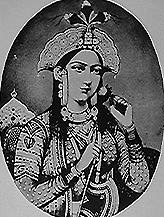 According
to Shah Jahan’s own court chronicle, the Badshahnama, which says, “ On the
17th Sil-I-Kada, 1040, died Nawab Aliya Begam, in the 40th year of
her age…She had borne him eight sons and six daughters…” According
to Shah Jahan’s own court chronicle, the Badshahnama, which says, “ On the
17th Sil-I-Kada, 1040, died Nawab Aliya Begam, in the 40th year of
her age…She had borne him eight sons and six daughters…”
Maulvi Mionuddin Ahmed
observes that Mumtaz's original name was Arjumand Banu Begum, and she was
conferred the honorific title Mumtaz-ul-Zamani by her father-in-law Jehangir,
but never Mumtaz Mahal, and she acquired the addition "Mahal"
posthumously by virtue of being entombed in a palace, and that on the contrary
it was not the monument which acquired her name, as latter-day historians would
have us believe.
What
was the status of this lady?
Arjumand Banu’s father was Khwaja Abul Hasan (also known
as Yamin-ud-Daula Asaf khan) and mother, Diwanji Begum. Born in 1594, Mumtaz was
married to Shah Jahan in 1612. She was 18 while Shah jahan was 21 years of age
at the time of marriage. But she as not Shah Jahan’s
first wife. Shah Jahan’s first wife, the queen, was a great
grand-daughter of the ruler of Persia – Shah Ismail Safwi. Shah Jahan had
numerous other wives and many consorts. He not only was married before taking
Mumtaz as his wife but also married again after her
death. In between these weddings he also used to take consorts by the hundreds into
his harem. It is, therefore, futile to argue, as is traditionally done, that
Shah Jahan was so devoted to Mumtaz as to lose all interest in life after her
death and that he, therefore, perpetuated her memory in a magnificent
monument.
During the 18 years of her married life she bore 14
children of whom 7 survived her. That meant in no single year was she free from
pregnancy, which shows Shah Jahan’s utter disregard
to his wife’s health, so much so that Mumtaz died soon after her
last delivery. She was only 37 years of age.
This questions the whole myth that
Taj Mahal is a monument of Love?
The Taj Mahal originated as a Shiva
Temple
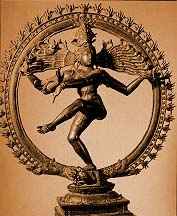 The
Taj edifice which Shah Jahan’s own chronicle
(The Badshahnama) admits to be a Hindu mansion could have been an ancient
Hindu temple. It is often wondered what determines the size of Mumtaz’s
centoph. It is neither of the average height of a Muslim woman of the 17th
century nor is it of the average height of an Islamic grave. It could be
possible that the height of Mumtaz’s cenotaph is the height of the Hindu
Shiva Linga consecrated in the Taj Mahal may have been the deciding
factor. It could be then that the ancient Hindu sacred Shiva Linga is buried in
the cenotaph while the grave in the basement may or may not contain Mumtaz’s
body because bodies are always buried in the earth and not on a two-storey-high
stone flooring. The
Taj edifice which Shah Jahan’s own chronicle
(The Badshahnama) admits to be a Hindu mansion could have been an ancient
Hindu temple. It is often wondered what determines the size of Mumtaz’s
centoph. It is neither of the average height of a Muslim woman of the 17th
century nor is it of the average height of an Islamic grave. It could be
possible that the height of Mumtaz’s cenotaph is the height of the Hindu
Shiva Linga consecrated in the Taj Mahal may have been the deciding
factor. It could be then that the ancient Hindu sacred Shiva Linga is buried in
the cenotaph while the grave in the basement may or may not contain Mumtaz’s
body because bodies are always buried in the earth and not on a two-storey-high
stone flooring.
Tavernier also mentions the six courts in the Taj Mahal
building complex where a bazaar use to be held. It is common knowledge that in
Hindu tradition bazaars and fairs are held around temples which constitute the
focal points of Hindu life.
(source: Taj
Mahal: The True Story - By P.N. Oak
http://www.hindunet.org/hindu_history/modern/taj_oak.html
http://www.amazon.com/exec/obidos/ASIN/0961161442/qid=996716357/sr=1-1/ref=sc_b_1/102-5083664-1858564)
Shah
Jehan did not build the Taj - By Arvind Ghosh
Some antecedents
of Taj Mahal. It was built over a pre-existing Hindu temple on the banks of
Yamuna and has been extensively documented by few archeologists who smelled
foul. It is like King's clothes story - nobody dares to question it because of
sheer image of the Taj Mahal in the world.
It is very rare to have Muslim structures near banks of
rivers, esp. Indian rivers. And all the builders of Taj Mahal had
their hands chipped off which is a fact.
For more information please refer to
Was
the Taj Mahal a Vedic Temple? The
Photographic Evidence).
The confession is contained in the "Badshahnama",
a chronicle containing an account of Shah Jahan's reign by his court employee,
Mulla Abdul Hamid Lahori. Printed copies of the "Badshahnama"
(Bibliotheca Indica Series of the Asiatic Society of Bengal) are now available
in all prominent historical libraries. A photostat of the relevant extract in
Persian is provided herewith. The passage reads:
"Before
this (i.e. being taken over) it was the manzil of Raja Mansingh. At this time,
it was in the occupation of Raja Jaisingh, his nephew. This was selected for
Mumtaz's heavenly abode...Although Raja Jaisingh deemed the take over of the
grand mansion (Ala manzil) as a great honor done to him yet as a matter of
etiquette and since it (taking over without compensation) is not permitted by
religious convention - he was paid a (certain sum for it from the royal
treasury."
(source: Shah
Jahan did not build the Taj - By Arvind Ghosh). Refer
to Heroic
Hindu Resistance to Muslim Invaders (636 AD to 1206 AD) - By Sita Ram Goel.
Voice of India, New Delhi.
For more on
destruction of Hindu temples, refer to
Hindu
Temples: What Happened to Them : (A Preliminary Survey) - By Arun Shourie.
For more on the Taj Mahal controversy, please
visit: Refer
to The
True Story of the Taj Mahal
- By P. N. Oak
***
An
Architect looks at the Taj Legend
by Professor Marvin H. Mills - Pratt
Institute, New York
http://www.geocities.com/Athens/Ithaca/3440/tajm.html
The architectural historian, Marvin Mills of the
Pratt Institute in New York had a piece of wood from a door in the north facade
of the Taj carbon-dated. When tested at the Brooklyn College Radiocarbon
Laboratory, the date came to 1359 AD, about three hundred years earlier than
Shahjahan's time. But such a single reading cannot be given too much of
importance in the weighing of the evidence.
The Taj Mahal Controversies
by Subhask Kak
http://www.sulekha.com/column.asp?cid=231036
The Taj Mahal - BBC
http://www.bbc.co.uk/dna/h2g2/A5220
Many rooms in the Taj Mahal have remained sealed since Shah
Jahan's time, and are still inaccessible to the public. Oak asserts they contain
a headless statue of Shiva and other objects commonly used for worship rituals
in Hindu temples.
Fearing political backlash, Indira Gandhi's government tried
to have Oak's book withdrawn from the bookstores, and threatened the Indian
publisher of the first edition with dire consequences.
The only way to really validate or discredit Oak's research
is to open the sealed rooms of the Taj Mahal, and allow international experts to
investigate.
The
Question of the Taj Mahal
By P. S. Bhat and A. L. Athawale
http://www.stephen-knapp.com/question_of_the_taj_mahal.htm
***
Jan. 30, 2007
Editor
Atlanta Journal Constitution
Dear Sir,
Re.: Taj Mahal – Mausoleum or
Hindu
Temple
Palace
?
In Anna
Johnson's article, 'Egypt Scorns 7 Wonders Contest' (AJC 1/29/07), a
picture of Taj Mahal is shown with comments that Taj, "mausoleum was built
on the orders of Shahjahan, Muslim Mogul Emperor to honor his beloved late
wife" and that "it is 'regarded as the best jewel of Muslim art in
India
."
The following scientific analysis questions the validity
of the fairy tale of Shahjahan's romantic love for
Mumtaz and suggests that Taj Mahal was the Hindu temple palace owned
by Hindu king, Raja Jaisingh and was
commandeered by Shah Jahan and desecrated and subsequently revamped by him for
use as a Muslim tomb.
The 'Badshahnama', an official chronicle written by Mulla
Abdul Hamid Lahori confirms that "the site covered with a majestic
magnificent lush garden, to the south of that great city (Agra) and amidst which
the building known as the palace of Raja Mansingh, at present owned by Raja
Jaisingh, grandson, was selected for the burial of the Queen whose abode is in
heaven." ( P.3 the History of India as told by its own Historians, Vol.
VII, Sir H. M. Elliot) ( Click
) (The Taj Mahal is a Temple Palace by P. N. Oak -
1993).
Mumtaz died and buried at Burhanpur in June 1631. Her body was exhumed and taken
to
Agra
on Dec. 11, 1631 and was reburied on the Taj ground on Jan 8, 1632. Is it
humanly possible to build such a vast magnificent complex within six months? The
first farman (emperor's decree) issued on 9/20/1632 by Shahahan urges Raja
Jaisingh to expedite shipment of marble for facing the interior walls of Taj
which suggests that the building was already in existence.
Aurangazeb wrote to his father (Shah Jahan) on Dec. 9, 1652 reporting serious
leaks on the north side and several other parts of the complex. Would Taj
building have shown symptoms of decay within mere 13 years of its construction?
Since Taj was built a few hundred years ago, it was showing normal wear and
tear.
Islam forbids building such mausoleum for a dead person's tomb and therefore it
is farfetched to believe that Taj is an Islamic construction.
A piece of a wooden panel was subjected to a carbon-14 test by Evan T, Williams,
Chemistry professor, City of New York College (Itihas Patrika- a quarterly
Journal, Vol. 4, dt. 12/31/1984). As per the test report, the age of wooden
samples was determined to be "1359 + - 89 AD. Thus there is a 67%
probability that the age of the sample lies between 1448 and 1270 AD. (Click).
Professor Marvin H. Mills (an architect and architectural historian), Pratt
Institute, New York had written to Archaeology Survey of India (ASI) on Oct. 3,
1984 requesting for permission to carry out tests on 20 samples from different
locations of Taj by using science of thermo-luminescence. The
permission was denied by ASI on flimsy grounds.
Other valid questions mentioned below have never been answered:
Why does the "mosque" face west instead of
facing
Mecca
against the Islamic norm?
Why does a mausoleum need hundreds of rooms- unusual for a mosque?
What are the sealed-up rooms on the south side of the long corridor opposite the
twenty contiguous rooms? Why is public allowed to see only the garden level
floors and not the rest of the several seven-storied edifices?
Why ASI does not allow scholars and research workers to enter and study whatever
objects and décor are within? Why has ASI blocked carbon or any other
scientific tests to verify the age of Taj?
Why are there Hindu symbols of lotus and 32 tridents ( Lord Shiva's weapon) in
the concave dome ceiling of Mumtaz's cenotaph?
Why does the dome of Taj bear a trident pinnacle with crescent? Islamic
crescents are always oblique. Where are the texts and manuals on Islamic
architecture? Where are the records and architectural designs of Taj Mahal?
The Goebbelsian lie,
started by Shah Jahan and his courtiers was perpetuated by the British as per
their 'divide and rule' policy. The old cliché "History is written
(distorted) by the victors" rightly fits into the story of Taj Mahal.
Unfortunately, the Indian politics of minority appeasement, fear of Muslim
violence and vote bank since 1947 has prevented the truth of age and origin of
Taj Mahal being revealed to the world at large. All said and done, Taj Mahal or
if we go by its original name 'Tejo Mahalaya' is wonder of the world, no doubt.
Sincerely,
D. Shah
(source:
http://intellibriefs.blogspot.com/2007/02/taj-mahals-historical-description.html).
***
Lord
William Bentinck, considered dismantling the Taj Mahal and putting it
up at a public auction and sold for the value of its marble. to meet the shortage of money in the East India Company's treasury. The
Taj Mahal was also used as a stable during the Raj.
(source: India
and World Civilization - By
D P Singhal p. 272).
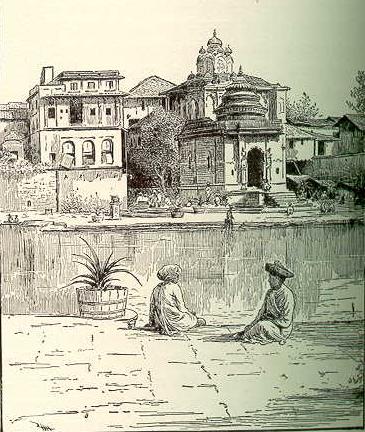
Rama's hallowed place.
(image
source: History of
India - By A V Williams Jackson).
***
Author
V. S. Naipaul
has said: "The Pakistanis boast of the history. So why should people just
across the border in India pretend it doesn't exist? What kind of nonsense is
this? In their junior history books it's there. " We
conquered, and looted. And we destroyed. We did away with all the idols, we did
away with all the temples. Yes, it was our land'. The Pakistani dream is one day
that there'll be a Muslim resurgence and they will lead the prayers in the
mosques in Delhi. You can hear that in Pakistan."
(source: www.tehelka.com).
(Afghan
Hindus forced to wear labels: The ruling
Taleban leadership in Afghanistan announced plans on Tuesday to force Hindus to
wear identity labels on their clothing to differentiate them from Muslims. The
proposal - reminiscent of the yellow Star of David that Jews were forced to wear
in Nazi Germany).
(source: http://www.msnbc.com/news/576476.asp)
Comparisons have been drawn with the Nazi regime, which in the 1930s had
similarly asked Jews to wear a yellow star so that they were clearly marked. Today
Hindus have been marked out, tomorrow they may well be targeted for crimes real
or imagined and there will be no one to save them. The US and the
West, leaders and believers of the Free World, supporters of the creed of
liberty and justice, are doing even less. All they have done is impose economic
sanctions, which only hurt the poor and the weak in Afghanistan.
(source: They
now come for the Hindus - By Amberish K Diwanji
-
Jihadis (Holy Warriors) restoration of Islamic rule over all parts of India.
http://www.sreevideos.com/indianews/library/weekly/aa122400c.htm)
Kashmir's Hindus run scared
of rising violence
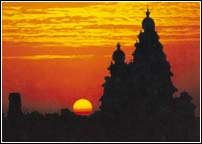 A wave of grisly killings of Hindus by Muslim
guerrillas over the past six weeks has terrorized the minority community in
revolt-racked Kashmir. The latest victims were two Hindu priests who were
dragged from a temple by Muslim rebels and beheaded, police said. A wave of grisly killings of Hindus by Muslim
guerrillas over the past six weeks has terrorized the minority community in
revolt-racked Kashmir. The latest victims were two Hindu priests who were
dragged from a temple by Muslim rebels and beheaded, police said.
(source: Yahoo
News.com - By Ashok Pahalwan).
Sir V. S. Naipaul
author, Nobel laureate, writes in his book Beyond
Belief: Islamic Excursions Among the Converted Peoples is:
"There probably has been
no imperialism like that of Islam and the Arabs....Islam seeks as an article of
the faith to erase the past; the believers in the end honor Arabia alone, they
have nothing to return to." In the Indian context, Naipaul views Islam as
far more disruptive than the British rule.
Muslim insecurity led to the call for the creation of Pakistan. It went at the
same time with an idea of old glory, of the invaders sweeping down the northwest
and looting the temples of Hindustan and imposing faith in the infidel. The
fantasy still lives: and for the Muslim converts of the subcontinent it is the
start of their neurosis, because in this fantasy the convert forgets who or what
he is and becomes the violator."
(source:
Beyond
Belief - IndiaStar).
Kashmiri Hindus (Pandits) are
in their eleventh year of exile
after Islamic religious
fundamentalists in the valley of Kashmir took to armed subversion and terrorism
and drove them out of their centuries old habitat.
(source: Panun
Kashmir.org).
Page < 1 2 3 4 5 6 7 8 9 10 11 >
|